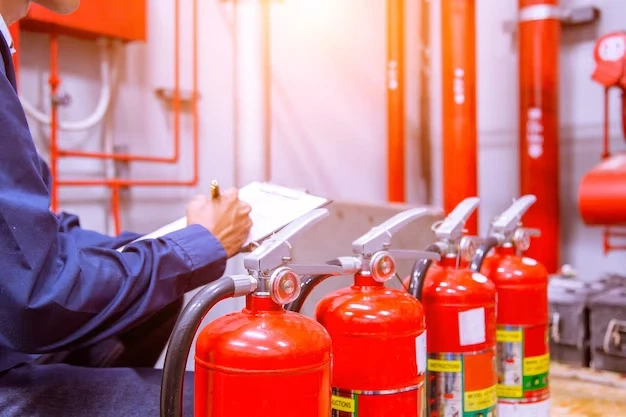Fire safety is a fundamental concern for homeowners, as fires can pose a significant threat to lives and property. While no one wants to think about the possibility of a fire in their home, it's essential to be prepared. One of the most effective and accessible tools for home fire safety is the fire extinguisher. In this comprehensive guide, we will explore the significance of fire extinguishers for homeowners, their types, proper usage, maintenance, and address common questions through a FAQ section. By the end of this guide, you will have a comprehensive understanding of the importance of having fire extinguishers in your home and how to use them effectively.
I. The Significance of Fire Extinguishers in Home Safety
A. The Threat of Home Fires
Home fires are a real and prevalent threat, with various causes such as cooking accidents, electrical faults, heating equipment malfunctions, and more. Being unprepared for a fire can have devastating consequences for both life and property.
B. The Role of Fire Extinguishers
Fire extinguishers are vital tools that provide homeowners with the means to respond quickly to small fires before they escalate. They can prevent fires from spreading and causing extensive damage, while also ensuring the safety of residents.
II. Types of Fire Extinguishers for Home Use
A. ABC Dry Chemical Fire Extinguishers
ABC fire extinguishers are versatile and suitable for a wide range of fires, including those involving wood, paper, electrical equipment, flammable liquids, and more. They are recommended for general home use.
B. Kitchen Fire Extinguishers
Kitchen fire extinguishers are specifically designed for kitchen fires, such as those caused by cooking oil or grease. They are a valuable addition to kitchens where fire risks are high.
C. Garage Fire Extinguishers
Garage fire extinguishers are designed for use in garages where fires involving chemicals, fuels, or other combustible materials are more likely to occur.
III. Proper Usage of Fire Extinguishers
A. P.A.S.S. Technique
The P.A.S.S. technique stands for Pull, Aim, Squeeze, and Sweep. It is the recommended method for using a fire extinguisher effectively. Pull the pin, aim the nozzle at the base of the fire, squeeze the handle, and sweep from side to side.
B. Knowing When to Use a Fire Extinguisher
Fire extinguishers are best used on small fires that are contained and pose no immediate danger to the occupants. If a fire is too large or rapidly spreading, it's crucial to evacuate and call the fire department.
IV. Fire Extinguisher Maintenance
A. Monthly Visual Inspections
Regular monthly visual inspections are necessary to ensure that the fire extinguisher is in its designated location, unobstructed, and its pressure gauge shows that it is fully charged. Additionally, check for visible damage, such as dents or rust, and ensure the operating instructions and label are legible.
B. Annual Professional Inspections
Annual professional inspections, conducted by trained technicians, involve a comprehensive examination of the fire extinguisher's components, pressure, weight, and internal condition. Any necessary maintenance or refilling is performed during this inspection.
V. Frequently Asked Questions (FAQ)
A. How do I choose the right fire extinguisher for my home?
To choose the right fire extinguisher, consider the specific fire risks in your home. ABC dry chemical fire extinguishers are versatile and suitable for general home use. However, you may also consider specialized extinguishers for specific areas, such as the kitchen or garage.
B. Can I use a fire extinguisher on an electrical fire?
Yes, ABC dry chemical fire extinguishers can be used on electrical fires. They are non-conductive and safe for use on energized electrical equipment. However, it's essential to stand at a safe distance and avoid direct contact with the fire source.
C. How often should I inspect my fire extinguisher?
Monthly visual inspections are recommended to ensure that your fire extinguisher is ready for use. Annual professional inspections should also be conducted to ensure its optimal condition.
D. What do I do if I've used a fire extinguisher in my home?
If you've used a fire extinguisher near me in your home, even if it's just a partial discharge, it's essential to have the extinguisher recharged or replaced. Do not leave an empty or partially discharged extinguisher in your home.
E. How can I dispose of an expired fire extinguisher?
Contact your local fire department or a hazardous waste disposal facility for guidance on the safe disposal of expired fire extinguishers. In some cases, they may be able to recharge or refurbish the extinguisher for continued use.
F. Where should I keep my fire extinguisher for easy access?
Fire extinguishers should be placed in easily accessible locations, such as the kitchen, garage, and near fire-prone areas. They should be mounted on the wall at an appropriate height and clearly visible.
VI. Conclusion
In conclusion, fire extinguishers are essential safety tools for every homeowner. They provide a means to respond quickly to small fires, preventing them from escalating and causing extensive damage. By choosing the right type of extinguisher, knowing how to use it properly, conducting regular inspections, and understanding when to use it, homeowners can enhance their fire safety and protect their loved ones and property. Remember that in the event of a large or rapidly spreading fire, safety should always come first, and the fire department should be called immediately.


